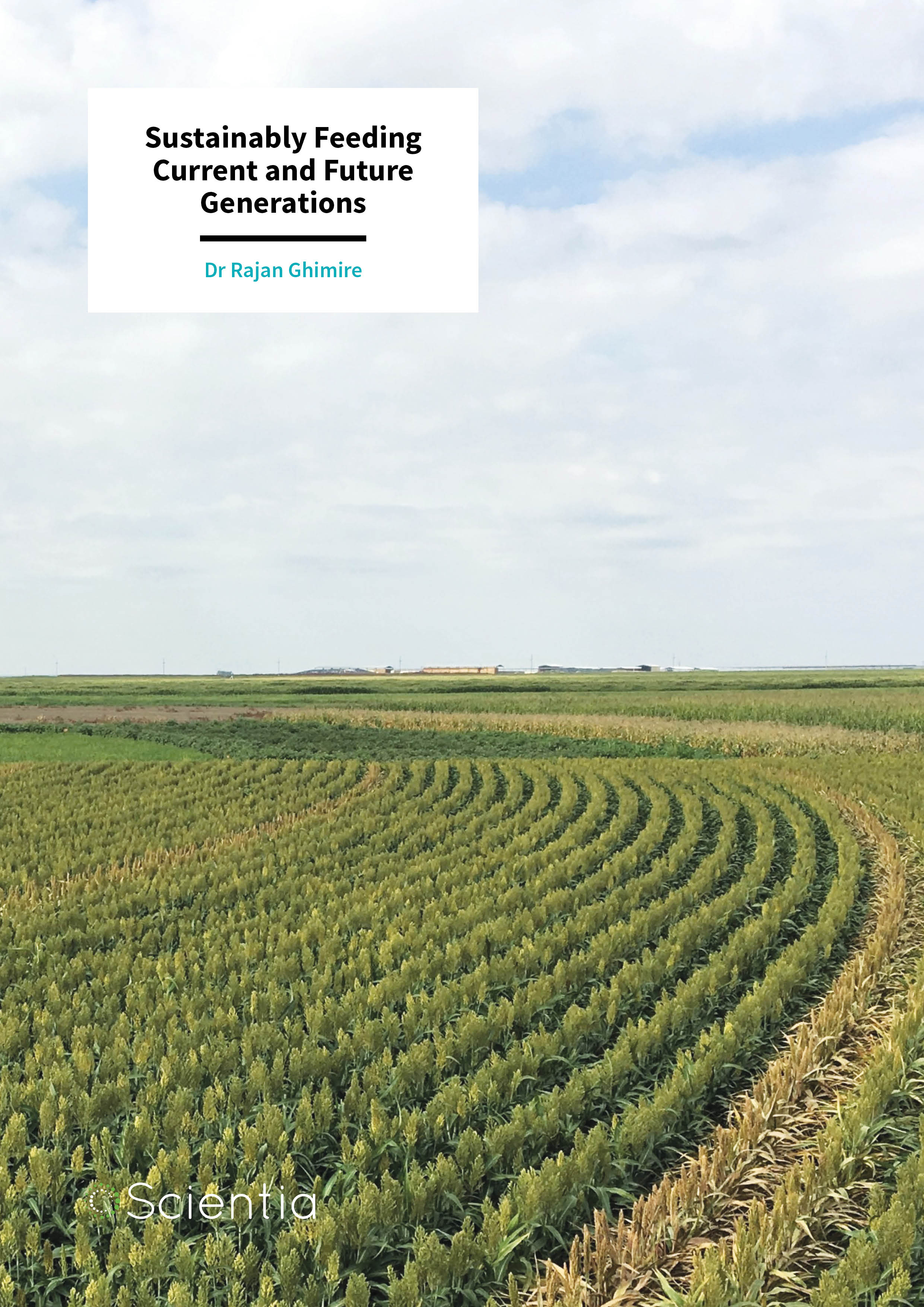Dr Rajan Ghimire – Sustainably Feeding Current and Future Generations
Sustainable food production in an ever-changing climate is high on the global agenda. Dr Rajan Ghimire from New Mexico State University is part of a community of scientists who aim to improve agricultural practices for greater crop resilience and long-term sustainability. Specifically, he focuses on improving the efficiency of agroecosystems through improved tillage, crop rotations, crop residues, and soil health management practices.
Sustainable Farming Practices
Access to life’s necessities, such as food and clean water, is as important as ever. Of course, the success of food production is highly dependent on climate conditions. Climate change is already influencing soil health and crop production around the world. This is compounded, in many cases, by dwindling water resources. However, better agricultural management practices can go a long way to mitigating, and even eliminating, some of these effects. Sustainable farming practices may also reduce global greenhouse gas emissions and help reverse some of the effects of climate change.
With little wonder then, scientists are working hard to improve current farming practices – ensuring that they not only provide what we need as a human race, but that they are also sustainable and environmentally friendly. Dr Rajan Ghimire, from New Mexico State University’s Agricultural Science Center is one such scientist. His team’s work focuses on improving the sustainability and resilience of agroecosystems and optimising associated farming practices, especially as applied to the semi-arid regions of New Mexico, where soil health and fertility are declining.
‘Climate change and its impacts on agricultural sustainability could not be more evident than in the semiarid agroecosystems with inherently low fertility soils and highly variable climate typical in the western parts of the United States,’ says Dr Ghimire. ‘It calls for immediate action to develop practical and profitable solutions to cropping systems management that restores soil health, improve environmental quality, and mitigates global warming with efficient use of the limited water available for crop production.’
Motivated by this reality, Dr Ghimire’s research aims to develop practical and profitable solutions for managing cropping systems in a way that restores soil health and makes the best use of the limited water available for crop production. Central to achieving this goal is better tillage practices, crop rotations and enhanced carbon sequestration from crop residues.
‘Climate change and its impacts on agricultural sustainability could not be more evident than in the semiarid agroecosystems with inherently low fertility soils and highly variable climate typical in the western parts of the United States… It calls for immediate action to develop practical and profitable solutions to cropping systems management that restores soil health, improve environmental quality, and mitigates global warming with efficient use of the limited water available for crop production.’
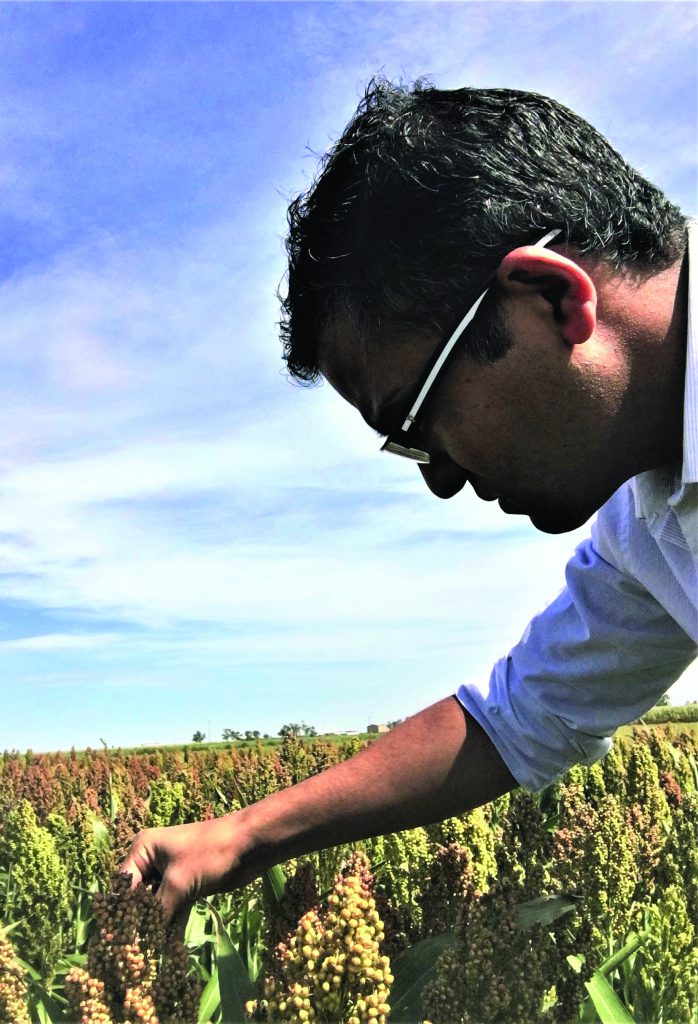 Addressing the Decline in Soil Organic Carbon
Addressing the Decline in Soil Organic Carbon
Carbon sequestration refers to the process of taking carbon from the atmosphere (as carbon dioxide) and converting into a form that can be stored long-term. Carbon sequestration is part of the carbon cycle – a fine-tuned process that ensures carbon is recycled and reused. Plants, and thus crops, have a large role to play in sequestering carbon into the soil.
Soil organic carbon (SOC) refers to the carbon that is contained within soil organic matter. SOC is said to be the basis for soil health and agroecosystem resilience as it is associated with the provision of nutrients and maintaining soil structure. Higher soil organic matter, which correlates with higher SOC, is also needed to retain moisture and reduce soil erosion. The levels of SOC can be an indicator of soil health, and the potential for crops to succeed. Therefore, scientists and farmers alike are searching for alternative management practices to increase SOC accumulation that are both effective and sustainable.
Understanding the rate of SOC mineralisation and incorporation into the soil is vital in this regard. Dr Ghimire specifically focuses on the sequestration of carbon into the soil from crop ‘residues’. The term ‘residue’ simply refers to the material that is left behind after a crop is harvested. Commenting on the practice, Dr Ghimire stated that ‘crop residues are the main input in maintaining SOC and nutrients in agricultural soils.’
Dr Ghimire and his colleagues studied the rate of carbon sequestration in residues of pea, oat and canola cover crops (crops grown to enrich the soil). They subsequently collected soil samples from these fields and estimated the rates of soil carbon turnover, that is, the rate of carbon intake against carbon loss. The team also determined the concentrations of target SOC fractions – those that facilitate nutrient cycling and support crop production.
As one might expect, where more residue was left behind, the concentration of labile SOC increased. The rate at which carbon sequestration occurred also increased. However, the team noticed that the latter tended to vary depending on the type of cover crop used. Nevertheless, it was clear that crop residues are indeed useful for sequestrating carbon into agricultural soils – a useful piece of knowledge for developing more sustainable farming practices.
As Dr Ghimire relates, although cover crops are dependent on precipitation and the availability of water for irrigation, they ‘can help in optimising resource use and conservation while maintaining agronomic, environmental, and economic goals of sustainable farming.’ Cover crops also serve to improve soil health and can result in better yields for the following crop.
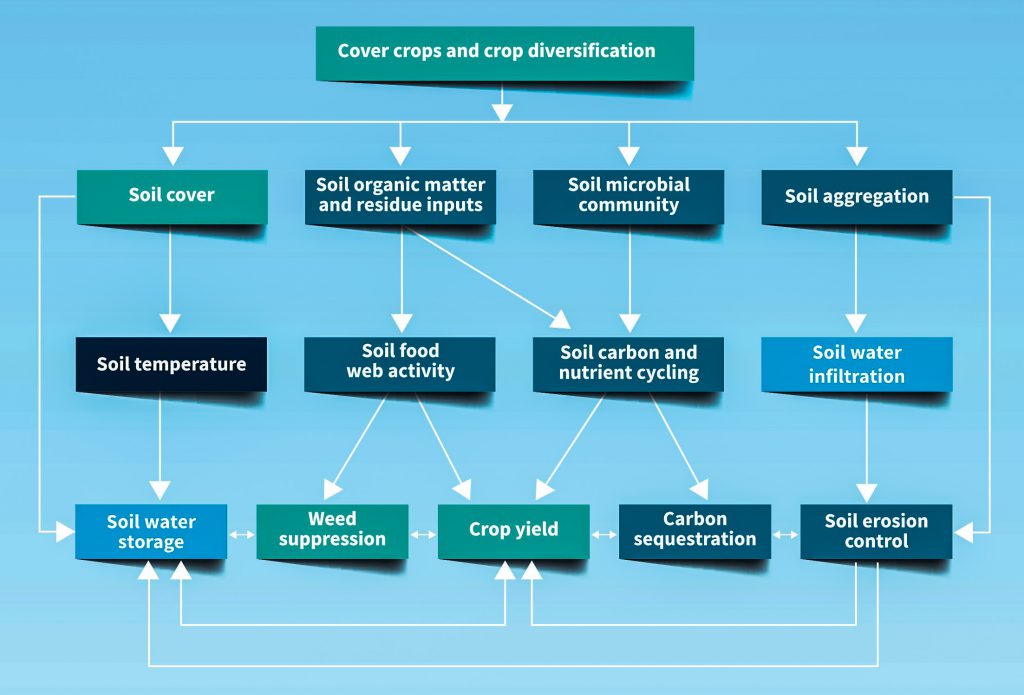
Achieving Sustainable Agrobiodiversity
Understanding the impacts of different crops on farmland is critical to improving management processes. In addition to this, understanding the stresses that crops experience in a changing climate and growing regionally-appropriate crops can improve the sustainability and profitability. In fact, this was the subject of a recent literature review that Dr Ghimire and his colleagues conducted, and is also the focus of the team’s ongoing research. There are several interesting findings from the review.
For one thing, Dr Ghimire stressed that ‘diversification of cropping systems is critical for improving agricultural sustainability in semiarid regions like New Mexico because soil health and fertility in the region are largely associated with farming practices that focus more on short-term profits at the expense of long-term soil and environmental quality.’ For example, Dr Ghimire and his team found that corn and wheat crops, although useful in many different applications, are potentially unsustainable as their resilience significantly decreases when they are subjected to environmental stressors. Therefore, alternatives to corn and wheat are worth considering, especially in a changing climate.
Dr Ghimire and his team also found that crop rotation and diversification have the potential to enhance SOC in agricultural soils and the resilience of cropping systems. Further benefits of these techniques include reducing greenhouse gas emissions from farmland and reducing the pollution of local waterways from agricultural run-off. However, crop rotation alone may take several years to enhance SOC levels in the soil. Rather, it is better to combine crop rotation with reduced tillage management (tillage refers to the process of preparing the land for growing crops) and other soil conservation measures. The good news is, these techniques are progressively being integrated into farming practices.
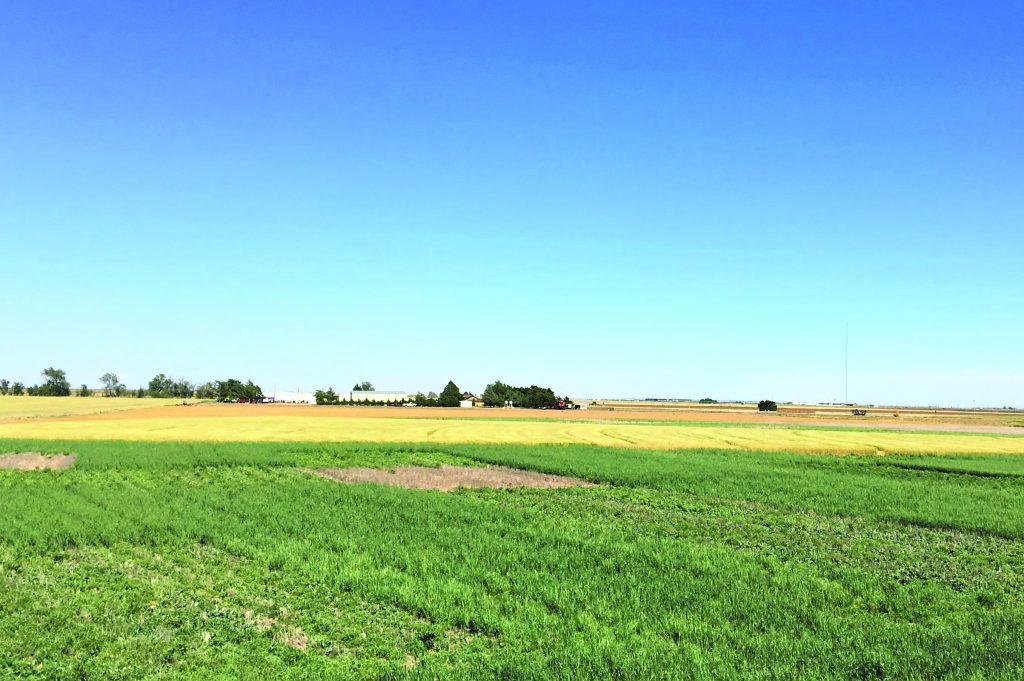
Water-Saving Farming Practices
The Ogallala aquifer is the most economically important groundwater source in eastern New Mexico and is the primary driver for crop production in the High Plains region. Sadly, water levels in the New Mexico portion of the Ogallala have been in a long-term, serious decline for decades. Therefore, sustainable management of the resource, that is, ensuring that recharging of the aquifer exceeds extraction, is vital.
Dr Ghimire suggests that altering tillage practices is one potential solution. In one report, he stated that ‘research on conventional tillage, strip-tillage, and no-tillage comparison in dryland situations shows the many benefits of reducing tillage. Specifically, no-tillage in dryland corn-sorghum rotations has increased soil water storage, reduced soil erosion, and maintained comparable crop yields.’
Of course, a different approach to tillage isn’t the only solution. Cover crops, crop rotation and diversification, and the input of biomass carbon have also been effective in increasing water use efficiency in New Mexico. Introducing more water efficient crops in rotation may increase economic returns for farmers while maintaining soil health and improving the environment. In fact, Dr Ghimire and his team are very much concerned with the sustainable use of water for crop production. In collaboration with other scientists from other states, for example, he has been working in the Ogallala aquifer region on improving water use efficiency and adopting water conservation practices.
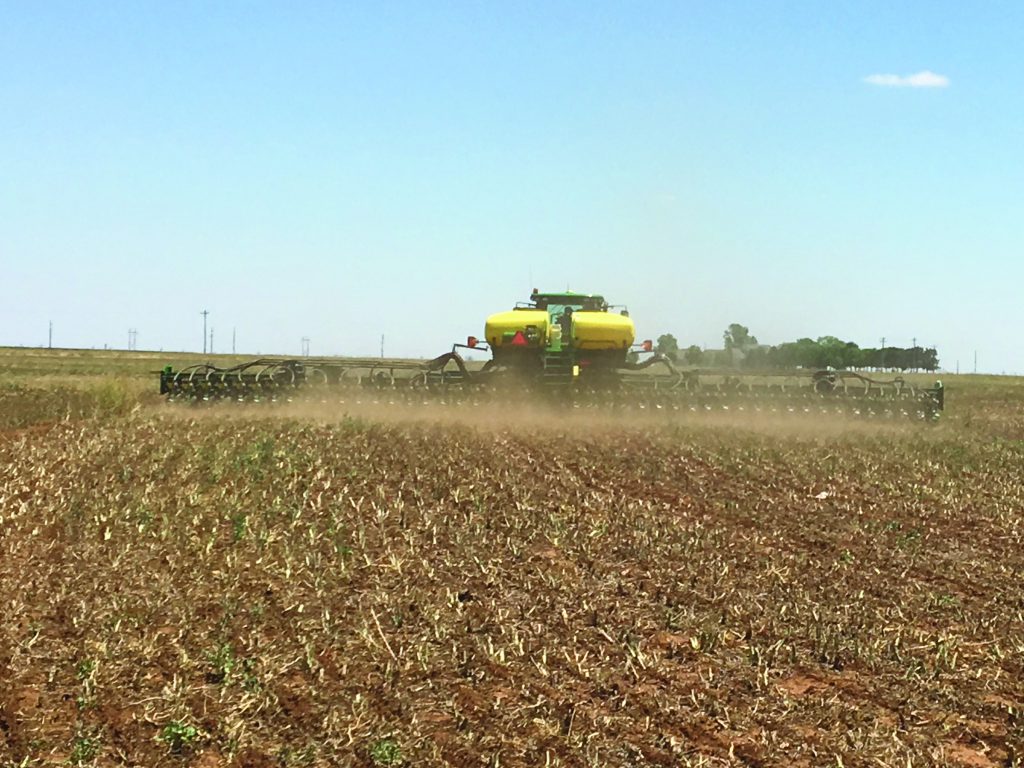
Meeting Our Needs in a Changing Climate
Dr Ghimire’s work is focused on meeting our food production needs, whilst minimising our impact on the environment and ensuring the long-term environmental and economic sustainability of global agriculture. Of course, this will be an ongoing challenge, especially as Earth’s climate continues to undergo significant change and more demands are placed upon global food markets.
Nevertheless, Dr Ghimire is committed to this cause. He will continue to work on agricultural conservation practices, a systems approach to research, real-world implementation of research outcomes, and the efficiency, profitability, and environmental quality of farming systems. Ultimately, he hopes to improve overall soil health, reduce greenhouse gas emissions from farming land, and improve water use and conservation efficiency. Indeed, Dr Ghimire is working towards adequately feeding current and future generations – in a sustainable and environmentally friendly way.
Meet the researcher
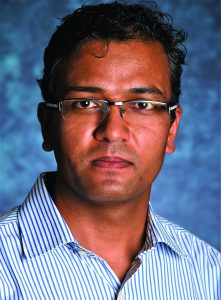
Dr Rajan Ghimire
New Mexico State University
Agricultural Science Center
Clovis, NM
USA
Dr Rajan Ghimire received his PhD in soil science from the University of Wyoming in 2013. At present, he serves as Assistant Professor at the New Mexico State University’s Agricultural Science Center at Clovis. His research has focused on improving the agronomic, economic, and environmental efficiency of agroecosystems through improved tillage, crop rotations, crop residues, and soil fertility management practices. He has actively participated in professional societies such as the American Society of Agronomy (ASA), the Soil Science Society of America (SSSA), and the American Association for Advancement of Science (AAAS). Ultimately, his goal is to ensure the long-term economic and environmental sustainability of agriculture.
CONTACT
E: rghimire@nmsu.edu
W: http://aces.nmsu.edu/directory/person.php?person_id=2045
KEY COLLABORATORS
Dr Mark Marsalis, Dr Omololu J Idowu, Dr Sangu Angadi, Dr Abdel Mesbah, Dr Ram N. Acharya, NMSU
Dr Meagan Schipanski, CSU
Dr Veronica Acosta-Martinez, Dr Upendra Sainju, USDA-ARS
FUNDING
NMSU’s Agricultural Experiment Station
USDA NIFA’s Agriculture and Food Research Initiative
USDA Natural Resources Conservation Services
FURTHER READING
BD Duval, R Ghimire, MD Hartman, MA Marsalis, Water and Nitrogen Management Effects on
Semiarid Sorghum Production and Soil Trace Gas Flux Under Future Climate, PLoS ONE, 2018, 13, 4.
R Ghimire, B Ghimire, A Mesbah, OJ Idowu, MK O’Neill, SV Angadi, MK Shukla, Current Status, Opportunities, and Challenges of Cover Cropping for Sustainable Dryland Farming in the Southern Great Plains, Journal of Crop Improvement, 2018, 32, 579–598.
A Cano, A Nunez, V Acosta-Martinez, M Schipanski, R Ghimire, C Rice, C West, Current knowledge and future research directions to link soil health and water conservation in the Ogallala Aquifer region, Geoderma, 2018, 328, 109–118.
B Ghimire, R Ghimire, D VanLeeuwen, AO Mesbah, Cover Crop Residue Amount and Quality Effects on Soil Organic Carbon Mineralization, Journal of Sustainability, 2017, 9.


